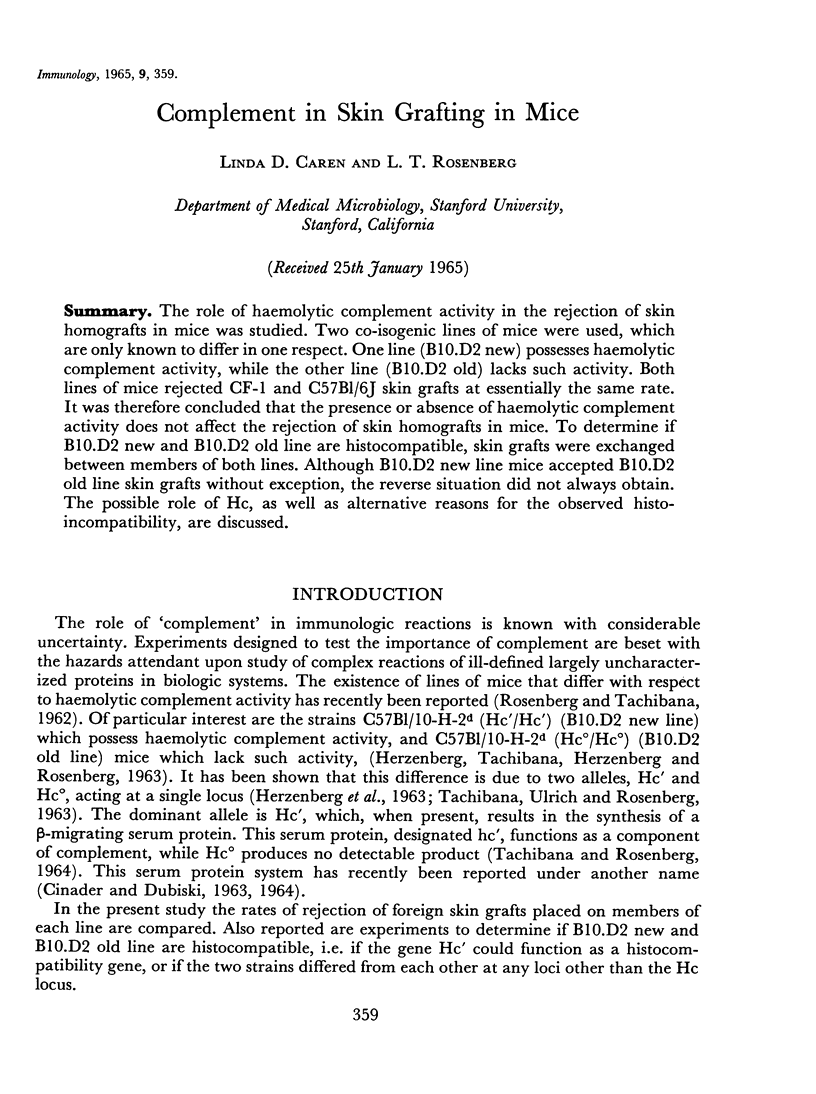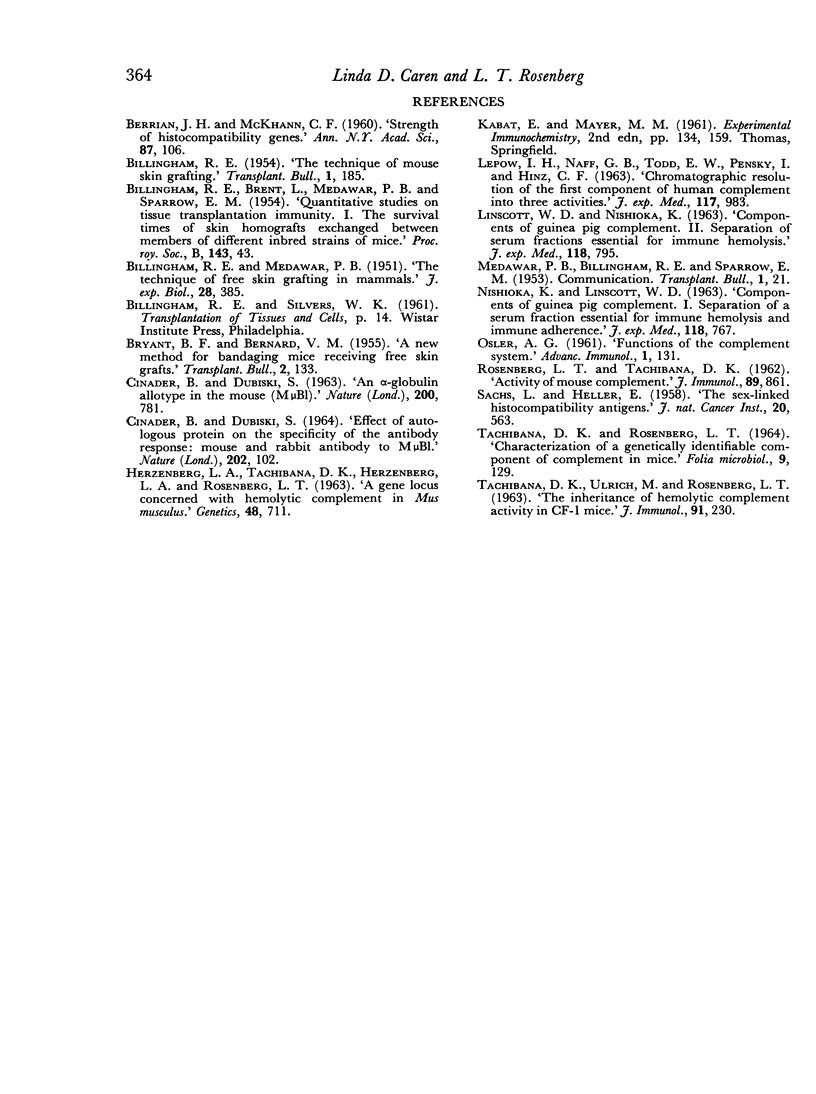Abstract
The role of haemolytic complement activity in the rejection of skin homografts in mice was studied. Two co-isogenic lines of mice were used, which are only known to differ in one respect. One line (B10.D2 new) possesses haemolytic complement activity, while the other line (B10.D2 old) lacks such activity. Both lines of mice rejected CF-1 and C57B1/6J skin grafts at essentially the same rate. It was therefore concluded that the presence or absence of haemolytic complement activity does not affect the rejection of skin homografts in mice. To determine if B10.D2 new and B10.D2 old line are histocompatible, skin grafts were exchanged between members of both lines. Although B10.D2 new line mice accepted B10.D2 old line skin grafts without exception, the reverse situation did not always obtain. The possible role of Hc, as well as alternative reasons for the observed histoincompatibility, are discussed.
Full text
PDF





Selected References
These references are in PubMed. This may not be the complete list of references from this article.
- CINADER B., DUBISKI S. AN APLHA-GLOBULIN ALLOTYPE IN THE MOUSE (MUB1). Nature. 1963 Nov 23;200:781–781. doi: 10.1038/200781a0. [DOI] [PubMed] [Google Scholar]
- CINADER B., DUBISKI S. EFFECT OF AUTOLOGOUS PROTEIN ON THE SPECIFICITY OF THE ANTIBODY RESPONSE: MOUSE AND RABBIT ANTIBODY TO MUBL. Nature. 1964 Apr 4;202:102–103. doi: 10.1038/202102a0. [DOI] [PubMed] [Google Scholar]
- EICHWALD E. J., SILMSER C. R., WEISSMAN I. Sex-linked rejection of normal and neoplastic tissue. I. Distribution and specificity. J Natl Cancer Inst. 1958 Mar;20(3):563–575. [PubMed] [Google Scholar]
- HERZENBERG L. A., TACHIBANA D. K., HERZENBERG L. A., ROSENBERG L. T. A gene locus concerned with hemolytic complement in Mus musculus. Genetics. 1963 May;48:711–715. doi: 10.1093/genetics/48.5.711. [DOI] [PMC free article] [PubMed] [Google Scholar]
- LEPOW I. H., NAFF G. B., TODD E. W., PENSKY J., HINZ C. F. Chromatographic resolution of the first component of human complement into three activities. J Exp Med. 1963 Jun 1;117:983–1008. doi: 10.1084/jem.117.6.983. [DOI] [PMC free article] [PubMed] [Google Scholar]
- LINSCOTT W. D., NISHIOKA K. COMPONENTS OF GUINEA PIG COMPLEMENT. II. SEPARATION OF SERUM FRACTIONS ESSENTIAL FOR IMMUNE HEMOLYSIS. J Exp Med. 1963 Nov 1;118:795–815. doi: 10.1084/jem.118.5.795. [DOI] [PMC free article] [PubMed] [Google Scholar]
- NISHIOKA K., LINSCOTT W. D. COMPONENTS OF GUINEA PIG COMPLEMENT. I. SEPARATION OF A SERUM FRACTION ESSENTIAL FOR IMMUNE HEMOLYSIS AND IMMUNE ADHERENCE. J Exp Med. 1963 Nov 1;118:767–793. doi: 10.1084/jem.118.5.767. [DOI] [PMC free article] [PubMed] [Google Scholar]
- ROSENBERG L. T., TACHIBANA D. K. Activity of mouse complement. J Immunol. 1962 Dec;89:861–867. [PubMed] [Google Scholar]
- TACHIBANA D. K., ROSENBERG L. T. CHARACTERIZATION OF A GENETICALLY IDENTIFIABLE COMPONENT OF COMPLEMENT IN MICE. Folia Microbiol (Praha) 1964 May;14:129–144. doi: 10.1007/BF02873998. [DOI] [PubMed] [Google Scholar]
- TACHIBANA D. K., ULRICH M., ROSENBERG L. T. THE INHERITANCE OF HEMOLYTIC COMPLEMENT ACTIVITY IN CF-1 MICE. J Immunol. 1963 Aug;91:230–232. [PubMed] [Google Scholar]


